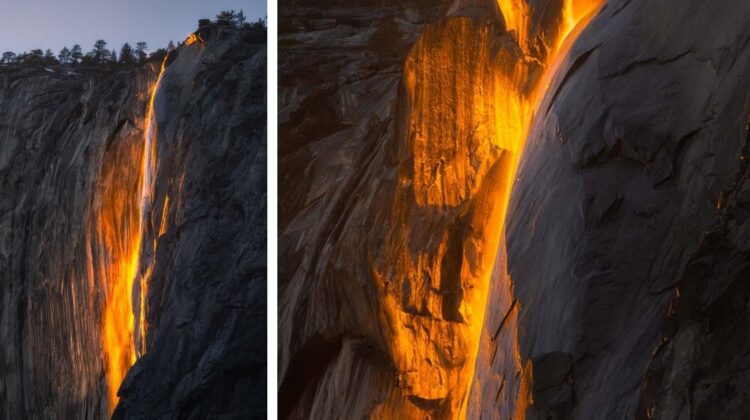In 1872, a hotel near Yosemite’s Glacier Point created a striking spectacle by spilling hot embers from a lookout point, simulating a cascade of lava.
This man-made phenomenon, known as the Firefall, became a popular summer attraction for nearly a century before being discontinued by the National Park Service. However, Yosemite offers its own natural version of the Firefall, which draws awe-struck visitors each winter.
Among this year’s admirers was Dan Zafra, a photographer for Capture the Atlas, who witnessed and documented the breathtaking event.
Unlike the artificial Firefall of the 19th century, Yosemite’s natural Firefall is entirely a creation of nature. It occurs at Horsetail Fall, an ephemeral waterfall that flows during winter and early spring.
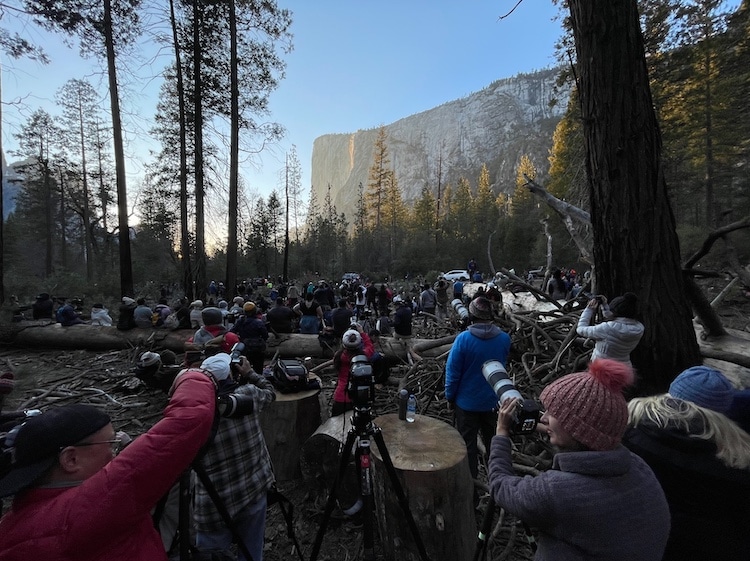
For a few fleeting weeks in February, if conditions align perfectly, the setting Sun bathes the cascading water in a fiery orange glow, making it appear like molten lava streaming down the granite cliffs. The result is nothing short of mesmerizing.
To witness this phenomenon, the skies must be crystal clear, and the water flow strong enough to be visible. The waterfall relies on snowmelt, so a sufficient snowpack is crucial.
These factors mean that the Firefall doesn’t occur every year, making it an even more coveted sight. Fortunately, Zafra experienced this natural wonder firsthand.
“Seeing a natural show like this with my own eyes was the most inspiring part of the experience, beyond any photograph,” Zafra shared with My Modern Met. “It was simply magical to watch how the colors of the waterfall gradually shifted until it truly resembled lava cascading down the mountain, whether seen with the naked eye or through my telephoto lens.”
Zafra wasn’t alone in marveling at this rare event. Photographers from all over gathered to capture the fleeting beauty of the Firefall, adding to the lively, almost celebratory atmosphere. For Zafra, the camaraderie and shared excitement were highlights of the experience.
However, standing out creatively in such a setting posed a challenge, as countless photographers aimed their lenses at the same natural wonder under nearly identical conditions.
“It’s certainly difficult to stand out creatively at an event like this, where thousands of photographers have been shooting for years and where the light conditions and viewpoints are so specific,” Zafra admitted. Still, he embraced the challenge, experimenting with camera equipment and post-processing techniques to create something unique.
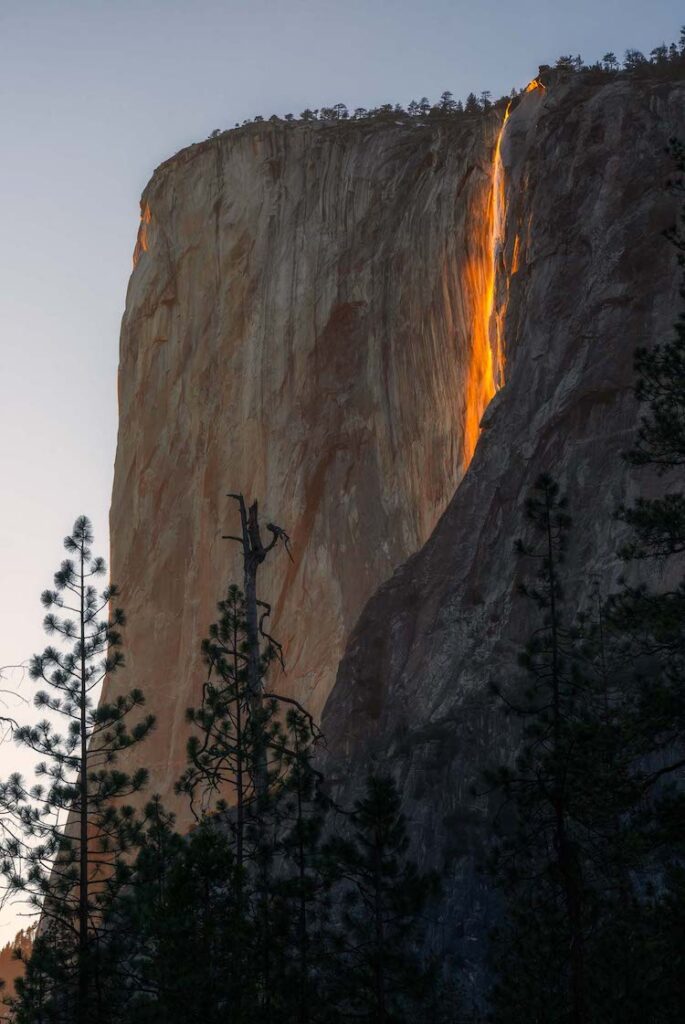
Zafra focused on fine details, using a high-resolution camera paired with a 600mm lens and an X1.4 extender. This setup allowed him to capture intricate abstract patterns formed by the colorful reflections on the granite wall.
“I was fascinated by how the colors on the wall changed with each passing second,” he said, noting the dynamic nature of the scene.
When the Sun sets at just the right angle, Horsetail Fall in Yosemite becomes a river of fire, an extraordinary spectacle of nature that continues to inspire and astonish all who witness it.
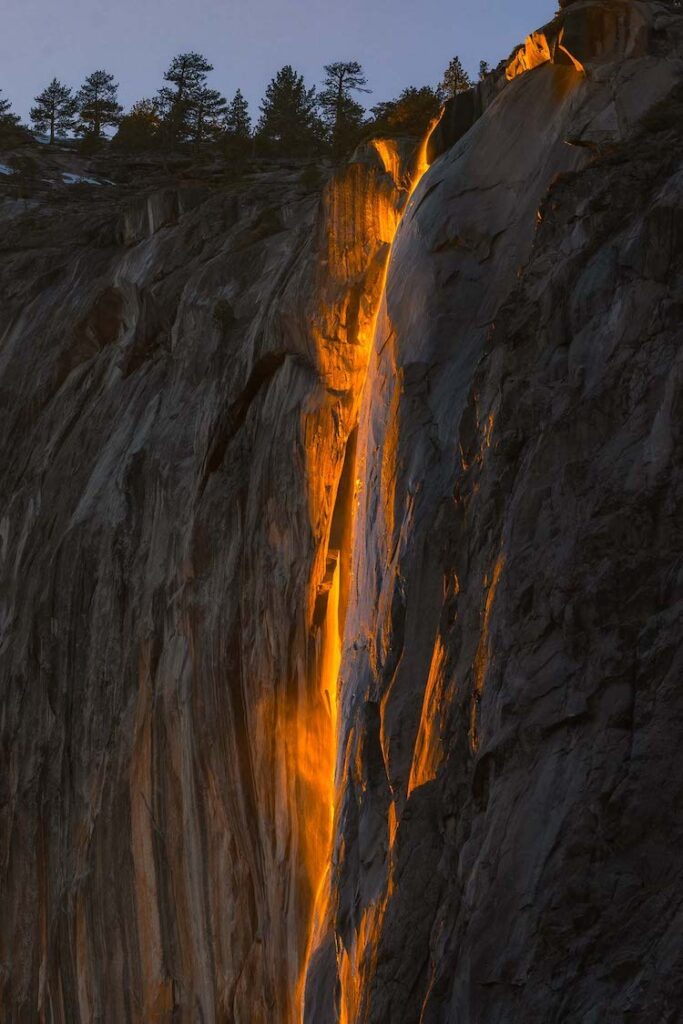
It’s an incredible natural event called the Firefall.
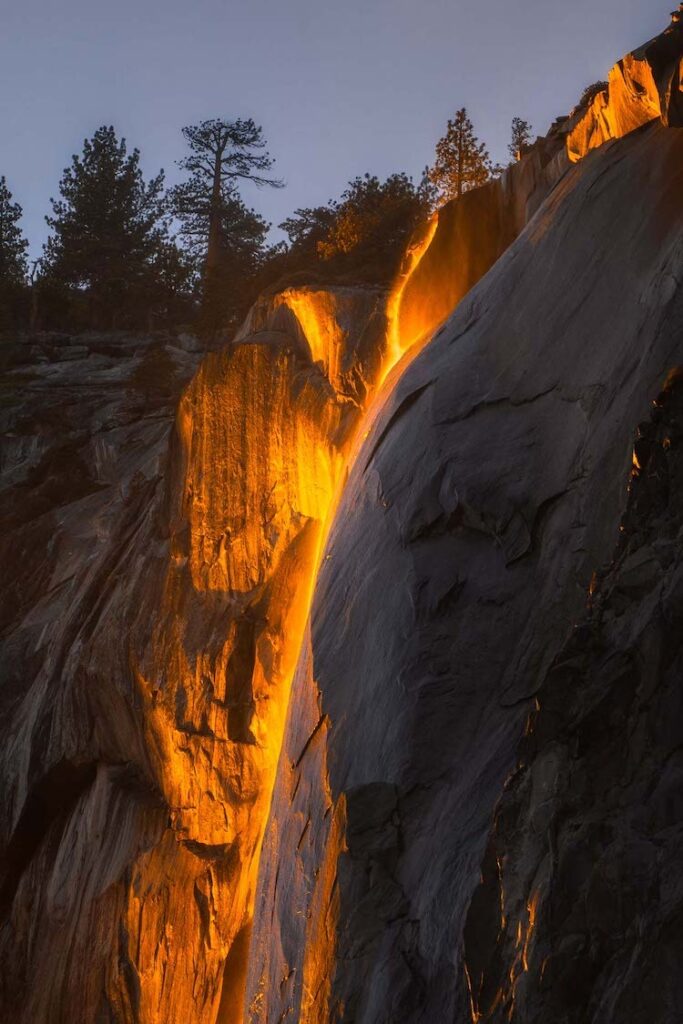
Via: Atlas
